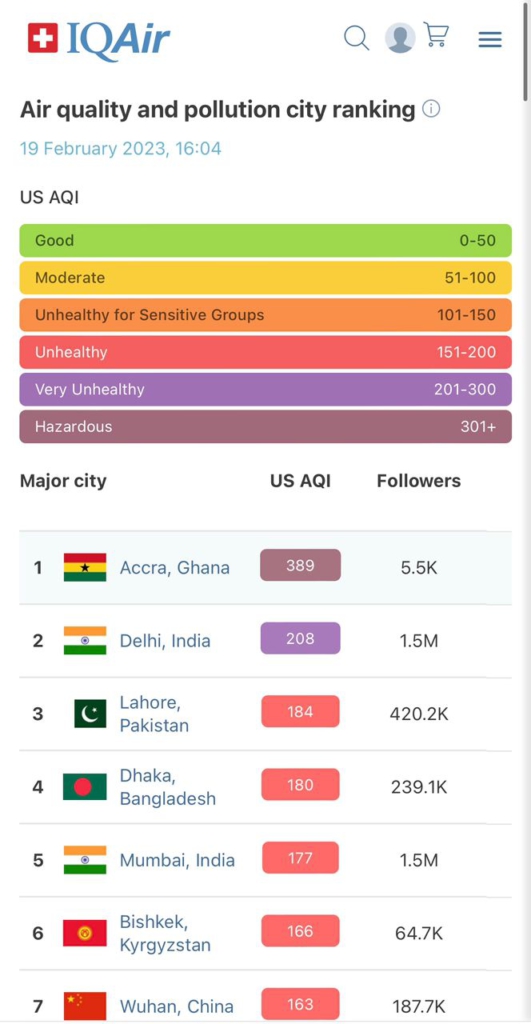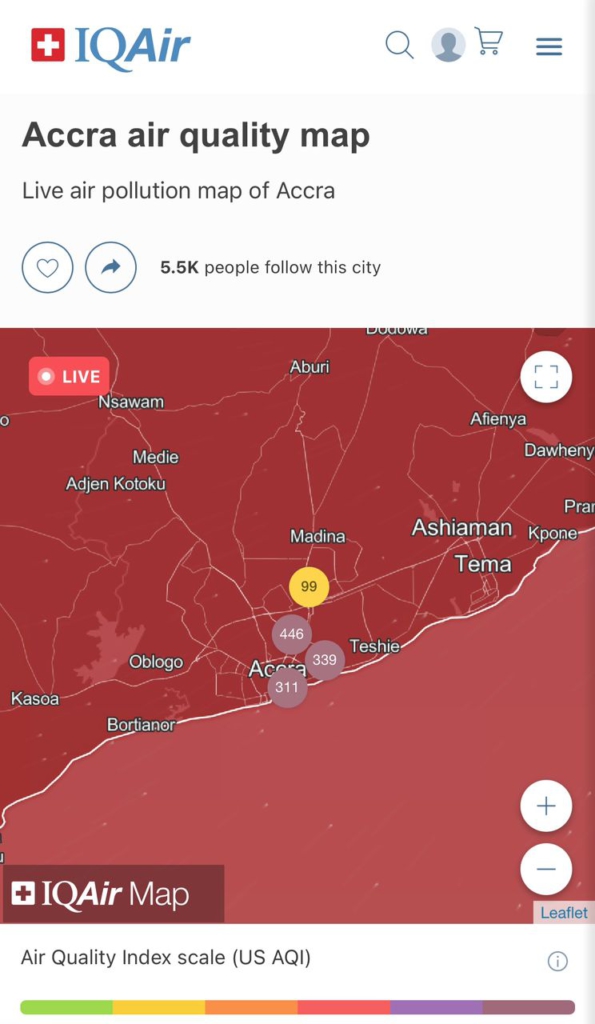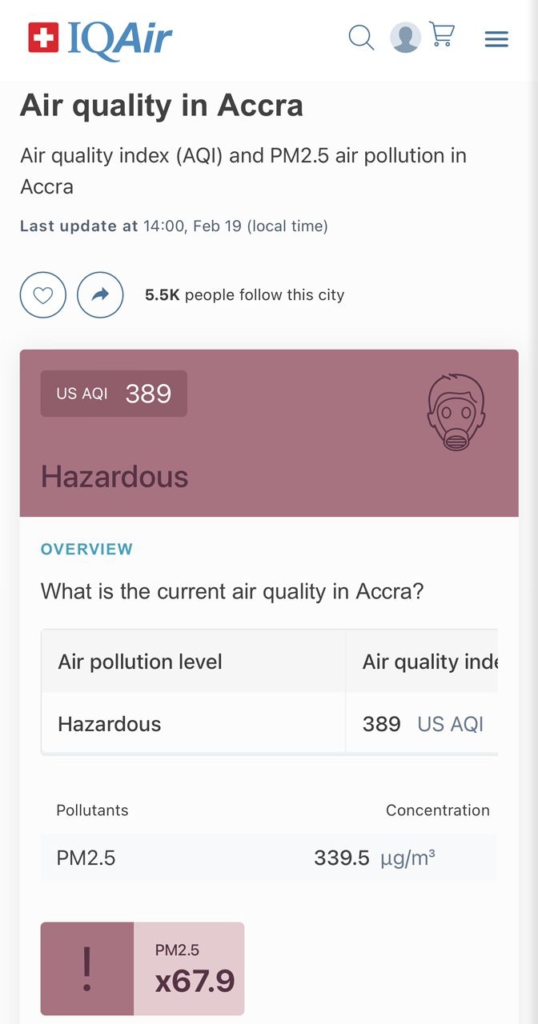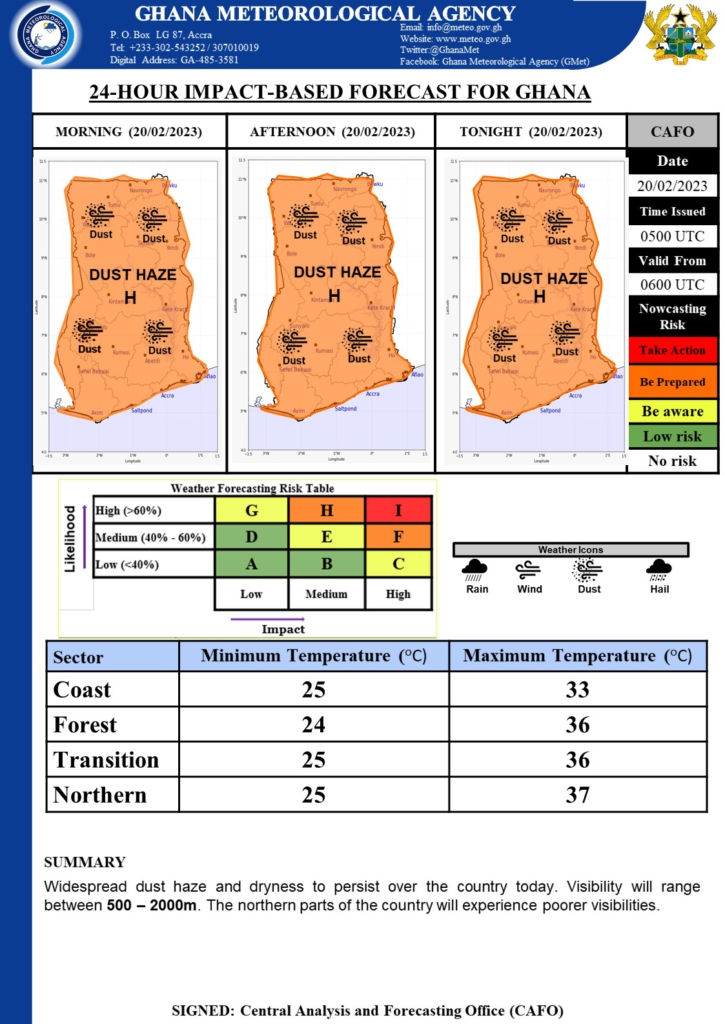IQAir’s AirVisual, a real-time air quality information platform, says Ghana’s air quality is currently 49.6 times the WHO annual air quality guideline value.
This, the site, attributes to the high concentration of PM2.5 in Accra’s atmosphere.
PM2.5 refers to particles found in the air, including dust, soot, dirt, smoke and liquid droplets with a diameter of 2.5 micrometres or less.

These particles are so small they can get deep into the lungs and into the bloodstream and cause havoc to one’s organs.

It is believed the high concentration of PM2.5 in the air has been compounded by the resurgence of the Harmattan as a result of regional dust storms pushing into Southern Ghana.

Due to the highly damaging effects of pollution exposure on vulnerable members of society, i.e. young children and the elderly, pregnant women, those with heightened sensitivity towards pollution, as well as those with pre-existing illnesses or compromised immune system, the population is advised to wear a mask outdoors, run an air purifier, close windows to avoid dirty outdoor air and avoid outdoor exercise.
Meanwhile, the Ghana Meteorological Agency has forecasted widespread dust haze and dryness across the country on Monday.

This has the propensity to affect visibility, especially in Ghana’s northern parts.






